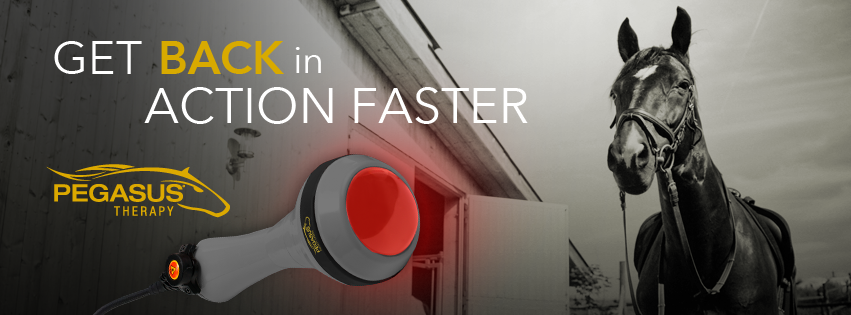Discover the Impressive Benefits of Equine Therapy for Psychological Healing
Discover the Impressive Benefits of Equine Therapy for Psychological Healing
Blog Article
Assessing the Performance of Laser Treatment in Horse Treatment for Injury Rehab
The analysis of laser treatment's performance in equine injury rehabilitation rests on several variables, consisting of recovery time, pain mitigation, and tissue regeneration. Scientific researches recommend noteworthy improvements in problems like tendonitis and osteo arthritis, credited to improved cellular feature and raised ATP production. Vets often observe superior results with laser therapy contrasted to traditional approaches, placing it as a critical aspect in equine care. The need for continuous surveillance and tailored treatment plans can not be overstated. What certain clinical evidence supports these insurance claims, and just how do vets implement these protocols in method?
Comprehending Laser Treatment
Laser treatment has actually come to be an essential device in vet medication, particularly in the therapy of equine problems. Recognized for its non-invasive nature and efficacy, laser therapy includes the application of specific wavelengths of light to stimulate tissue fixing and decrease swelling. This restorative technique is significantly favored for its capacity to increase the healing procedure in steeds experiencing from a variety of bone and joint injuries and persistent problems.
The main device behind laser treatment is its capacity to improve mobile functions. When laser light permeates the skin, it is soaked up by mitochondria, the giant of cells, which causes boosted production of adenosine triphosphate (ATP) This biochemical power boost facilitates mobile fixing and regeneration. Furthermore, laser treatment promotes vasodilation, enhancing blood circulation and oxygen shipment to broken cells, thus accelerating recovery.
In equine medication, laser therapy is specifically valuable for problems such as tendonitis, osteo arthritis, and wound recovery. The strategy is lauded for its pain-relieving buildings, permitting equines to regain wheelchair and feature more rapidly. Veterinarians also value its marginal side results contrasted to various other therapy techniques, making it a reliable and risk-free option for equine treatment.

How Laser Treatment Functions

Upon absorption, these photons cause a collection of biochemical modifications, improving mitochondrial feature and bring about boosted adenosine triphosphate (ATP) manufacturing. This increase in ATP accelerates cellular metabolic process, promoting tissue repair service and regeneration. Additionally, laser treatment modulates inflammatory responses by affecting cytokine levels and lowering oxidative tension, thus minimizing discomfort and swelling.
Another considerable facet of laser therapy is its duty in improving navigate to these guys microcirculation. The treatment promotes vasodilation, enhancing blood circulation and oxygen shipment to damaged tissues (Equine Therapy). This promotes the elimination of cellular particles and sustains the proliferation of fibroblasts and collagen synthesis, vital for injury healing
Scientific Proof
The efficacy of laser treatment in equine therapy has actually been corroborated with various medical researches, showcasing its healing possible across a series of conditions. A number of controlled trials and observational research studies have actually documented considerable renovations in tissue repair service, pain reduction, and overall rehabilitation timelines. For circumstances, a study performed by Turner et al. (2012) demonstrated that steeds treated with low-level laser treatment (LLLT) for ligament injuries displayed sped up healing contrasted to those getting conventional treatments. The research highlighted a marked decrease in inflammation and boosted collagen development.
Likewise, study by Johnson and colleagues (2015) concentrated on equine muscle injuries, disclosing that laser therapy dramatically accelerated muscle fiber regeneration and lowered muscle tightness. Professional evaluations have actually revealed that laser therapy can relieve persistent problems such as osteo arthritis.
Veterinarian Insights

Vets also value the flexibility of laser therapy. It can be employed for a large range of conditions, from superficial injuries to much deeper bone and joint injuries. Dr. Emily Brown highlights its energy in treating problems like tendonitis and osteo arthritis, where standard therapies typically fail. She mentions that laser treatment can be tailored to the specific needs of each equine, guaranteeing optimum end results.
Additionally, veterinarians value the capacity to integrate laser therapy with various other treatment techniques. This multimodal approach can boost general therapy efficacy, giving a detailed remedy for equine recovery. Such endorsements from seasoned specialists highlight the growing acceptance and application of laser treatment in equine medication.
Practical Considerations
A vital click here for more info aspect of applying laser treatment in equine treatment involves comprehending the practical factors to consider that guarantee its efficacy and safety and security. It is important to choose the proper laser gadget, as various types vary in wavelength, power, and penetration deepness. Veterinarians must be fluent in these criteria to customize treatment procedures efficiently to each injury type
In addition, the frequency and period of laser treatment sessions require cautious planning to make the most of therapeutic benefits while reducing any type of potential damaging effects. Constant monitoring of the horse's response to treatment can assist necessary adjustments in the treatment routine. Developing a safe and controlled environment throughout therapies is also necessary to prevent unexpected exposure to laser exhausts, which might hurt both the equine and the trainer.
Training and accreditation of employees carrying out laser therapy are extremely important to guarantee correct technique and to support safety and security standards. Additionally, keeping precise documents of each session, including laser settings and observed outcomes, is crucial for evaluating the overall efficiency of the treatment and for making data-driven decisions.
Final Thought
Laser treatment has emerged as an efficient method in equine injury recovery, providing substantial benefits in recuperation time, discomfort alleviation, and tissue healing. For optimal outcomes, continuous surveillance and customized treatment methods remain essential in leveraging the full capacity of laser therapy in equine treatment.
Report this page